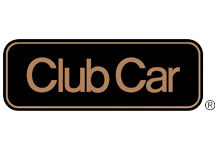For millions of off road vehicles and motorcycles, bass boats, lawn mowers, maintenance and farming equipment and golf carts resting in garages and barns over the winter months there may be a rude awakening this spring when batteries fail to crank start.
Why? Basically, a lead-acid battery is able to store and supply energy if enough of the active plate material is available to allow an energy transfer to occur naturally. In theory, lead acid batteries should last many years, but they usually don’t because of a series of detrimental problems caused by “excessive sulfation buildup” related to the natural and necessary formation of sulfate crystals on the surface of lead battery plates.
As a battery ages through use or sits unused for periods of time, these lead sulfate crystals enlarge and can build up “excessively” to the point where they create a physical barrier across the surface of the plate. Before long, this buildup can become so dense that a battery is no longer able to accept or release energy.
All batteries, regardless of their chemistry, will self-discharge. The rate of self-discharge for lead acid batteries depends on the storage or operating temperature. For example, a 125 AH battery that is stored for four months (16 weeks) during winter without being charged will lose 80 amps of its 125-amp capacity. It will also suffer from severe sulfation, inhibiting the plates from accepting and distributing a charge.
Ideally, owners of vehicles, boats and equipment stored for the winter months should be utilizing procedures such as those introduced by PulseTech Products Corp. to test, maintain, desulfate and recover batteries to ensure peak condition and cranking power for use in the spring.
Realistically, the vast majority store and forget until the spring thaw, only to hear the click, click, click of a dead battery that now won’t accept a charge.
Is it possible to recover a discharged battery? Yes. Use a Battery Analyzer to determine if the battery is a good candidate for recovery (Note: Even though the analyzer may read “REPLACE BATTERY,” it could still be recoverable.) There are smart charges on the market that will analyze, charge and recover all types of lead acid batteries. Keep in mind that some very badly sulfated battery plates could take several days to clean. Also, not all batteries can be totally recovered. If a battery has a short circuit or physical damage, it is impossible to bring back.
By helping keep plates clean, the battery works harder than ever thought possible. It maintains a greater reserve capacity, will recharge faster and release more of its stored energy. With more available energy, battery output is maximized between charges, and electronic accessories work better. For more information, visit www.pulsetech.net.






















